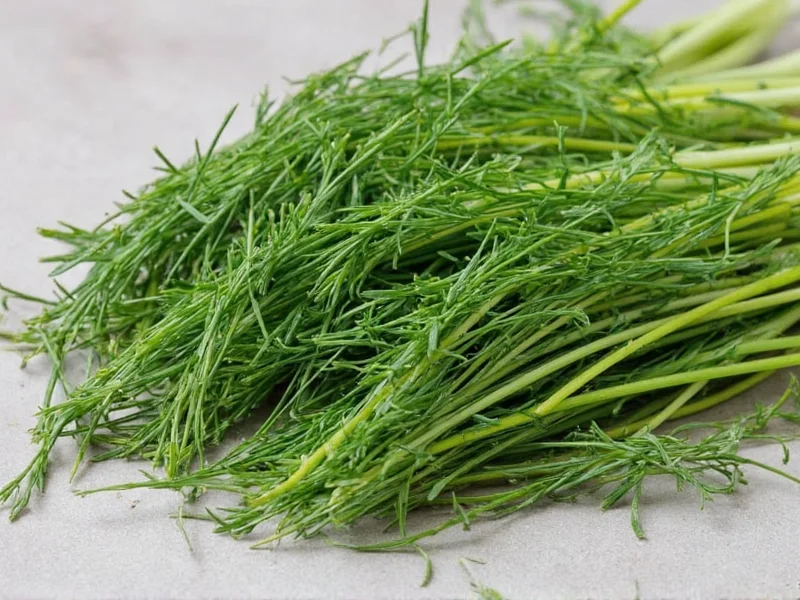When your recipe calls for dill but your herb garden or pantry comes up short, knowing effective substitutes prevents recipe disasters. Dill's distinctive flavor—a bright, grassy taste with subtle anise notes—plays a starring role in everything from Scandinavian gravlax to Russian borscht. Understanding which alternatives preserve your dish's integrity requires matching flavor profiles rather than simple volume swaps.
Understanding Dill's Unique Flavor Profile
Dill delivers a complex flavor experience that combines:
- Fresh, grassy top notes similar to celery leaves
- Subtle licorice undertones from natural anethole compounds
- Citrusy brightness that enhances fatty foods like fish and dairy
- A delicate structure that wilts quickly when cooked
These characteristics explain why some substitutes work better for specific applications. Dill seed, the mature fruit of the plant, offers a more concentrated, earthy flavor that works better in cooked dishes than fresh dill weed.
Top Dill Substitutes with Practical Guidance
Not all dill alternatives work equally well across recipes. Consider these factors when choosing your substitute:
| Substitute | Best For | Ratio | Flavor Difference |
|---|---|---|---|
| Fresh Tarragon | Fish, egg salads, creamy sauces | 1:1 fresh | Stronger anise flavor, slightly less citrus |
| Fennel Fronds | Salads, seafood, vegetable dishes | 1:1 fresh | Sweeter licorice note, more delicate texture |
| Parsley + Lemon Zest | Dips, dressings, potato salads | 3:1 ratio | Missing anise notes but provides freshness |
| Dill Seed | Pickling, breads, cooked dishes | 1:1 dried | Earthier, less bright than fresh dill |
| Dried Tarragon | Cooked dishes requiring dried herb | 3:4 ratio | More intense anise flavor than dried dill |
Substitution Guide by Dish Type
For Fish and Seafood Dishes
Fresh tarragon makes the most seamless transition in fish recipes. Its similar anise notes complement salmon and trout without overwhelming delicate flavors. Use equal amounts of fresh tarragon for fresh dill. For gravlax or ceviche, add a pinch of sugar to balance tarragon's slight bitterness. When preparing Scandinavian fish balls or German fish soup, fennel fronds provide a milder alternative that won't dominate other ingredients.
For Salads and Dressings
The parsley-lemon zest combination shines in cold applications. Finely chop 3 parts flat-leaf parsley with 1 part lemon zest to mimic dill's brightness in potato salad, cucumber salad, or tzatziki. This substitute works particularly well when dill's grassy notes would overpower lighter ingredients. For Greek salads or fattoush, add a pinch of dried mint to enhance the herbal profile.
For Pickling and Preserves
Dill seed becomes your best friend for pickling projects. Use equal amounts of dill seed when fresh dill isn't available for refrigerator pickles or fermented cucumbers. The seeds contain concentrated essential oils that infuse brine effectively. For traditional dill pickles, add one mustard seed per jar to enhance the flavor profile. Avoid tarragon for pickling—its stronger flavor can overwhelm the delicate balance of pickling spices.
For Dips and Creamy Sauces
When making ranch dressing, baba ganoush, or smoked fish dip, combine chervil with a squeeze of lime for the closest approximation. Chervil's mild anise flavor closely matches dill's profile, while lime provides the necessary acidity. Use a 1:1 ratio of fresh chervil to dill, adding lime juice gradually until the brightness matches your expectations. This combination works particularly well for dairy-based dips where dill's grassiness would otherwise get lost.
Measurement Conversion Guide
Understanding herb conversions prevents flavor imbalances. Remember these key ratios:
- 1 tablespoon fresh dill = 1 teaspoon dried dill
- 1 teaspoon dried dill = 1 teaspoon dill seed (though seed has stronger flavor)
- 1 tablespoon fresh tarragon = 1¼ teaspoons dried tarragon
- When substituting dried herbs for fresh, use one-third the amount
Dried herbs generally have 2-3 times the potency of fresh varieties. Always add dried substitutes early in cooking to allow flavors to bloom, while fresh substitutes should be added in the final minutes.
When Substitutions Fall Short
Certain dishes rely so heavily on dill's unique chemistry that substitutes create noticeably different results. Traditional Scandinavian gravlax requires dill's specific enzyme profile to properly cure salmon. Russian solyanka soup depends on dill's interaction with sour cream to balance the broth's acidity. In these cases, consider modifying your recipe rather than forcing a substitution—perhaps make a dill-infused oil from dill seeds steeped in warm olive oil as a compromise.
Pro Tips for Successful Substitutions
- When using tarragon as a dill substitute, remove thicker stems which can be bitter
- Fennel fronds work best when harvested young—older fronds develop stronger licorice notes
- Add lemon juice to parsley substitutes only at the end of cooking to preserve brightness
- For baked goods calling for dill, use half dill seed and half caraway for balanced flavor
- Always taste as you go when substituting—adjust other seasonings to compensate











 浙公网安备
33010002000092号
浙公网安备
33010002000092号 浙B2-20120091-4
浙B2-20120091-4